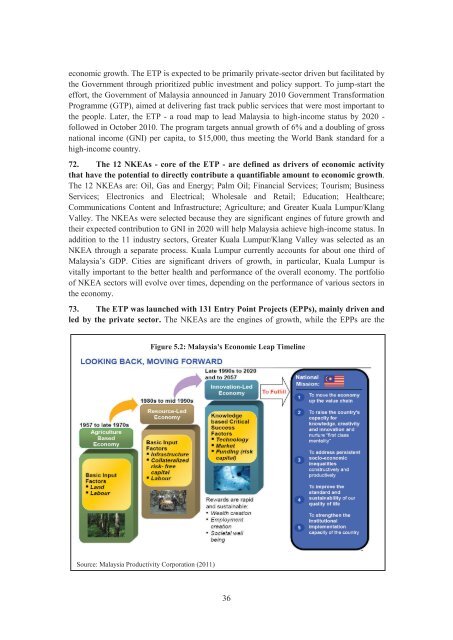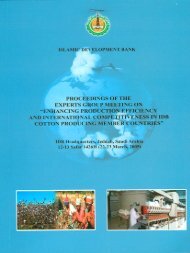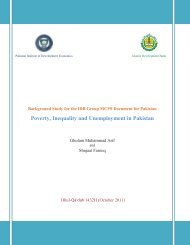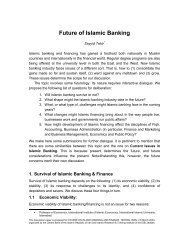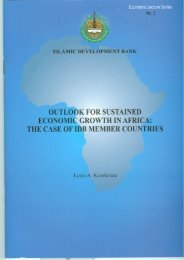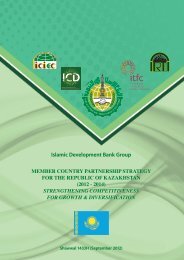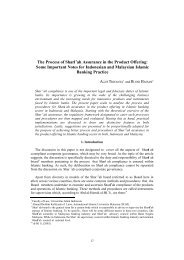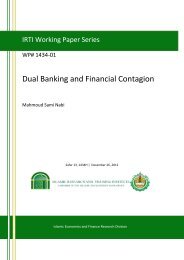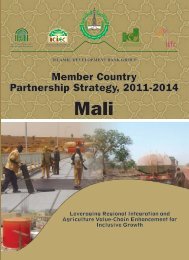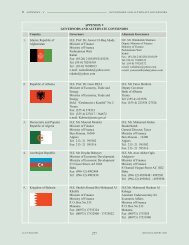Country Economic Work for Malaysia - Islamic Development Bank
Country Economic Work for Malaysia - Islamic Development Bank
Country Economic Work for Malaysia - Islamic Development Bank
You also want an ePaper? Increase the reach of your titles
YUMPU automatically turns print PDFs into web optimized ePapers that Google loves.
economic growth. The ETP is expected to be primarily private-sector driven but facilitated by<br />
the Government through prioritized public investment and policy support. To jump-start the<br />
ef<strong>for</strong>t, the Government of <strong>Malaysia</strong> announced in January 2010 Government Trans<strong>for</strong>mation<br />
Programme (GTP), aimed at delivering fast track public services that were most important to<br />
the people. Later, the ETP - a road map to lead <strong>Malaysia</strong> to high-income status by 2020 -<br />
followed in October 2010. The program targets annual growth of 6% and a doubling of gross<br />
national income (GNI) per capita, to $15,000, thus meeting the World <strong>Bank</strong> standard <strong>for</strong> a<br />
high-income country.<br />
72. The 12 NKEAs - core of the ETP - are defined as drivers of economic activity<br />
that have the potential to directly contribute a quantifiable amount to economic growth.<br />
The 12 NKEAs are: Oil, Gas and Energy; Palm Oil; Financial Services; Tourism; Business<br />
Services; Electronics and Electrical; Wholesale and Retail; Education; Healthcare;<br />
Communications Content and Infrastructure; Agriculture; and Greater Kuala Lumpur/Klang<br />
Valley. The NKEAs were selected because they are significant engines of future growth and<br />
their expected contribution to GNI in 2020 will help <strong>Malaysia</strong> achieve high-income status. In<br />
addition to the 11 industry sectors, Greater Kuala Lumpur/Klang Valley was selected as an<br />
NKEA through a separate process. Kuala Lumpur currently accounts <strong>for</strong> about one third of<br />
<strong>Malaysia</strong>’s GDP. Cities are significant drivers of growth, in particular, Kuala Lumpur is<br />
vitally important to the better health and per<strong>for</strong>mance of the overall economy. The portfolio<br />
of NKEA sectors will evolve over times, depending on the per<strong>for</strong>mance of various sectors in<br />
the economy.<br />
73. The ETP was launched with 131 Entry Point Projects (EPPs), mainly driven and<br />
led by the private sector. The NKEAs are the engines of growth, while the EPPs are the<br />
Figure 5.2: <strong>Malaysia</strong>'s <strong>Economic</strong> Leap Timeline<br />
Source: <strong>Malaysia</strong> Productivity Corporation (2011)<br />
36


